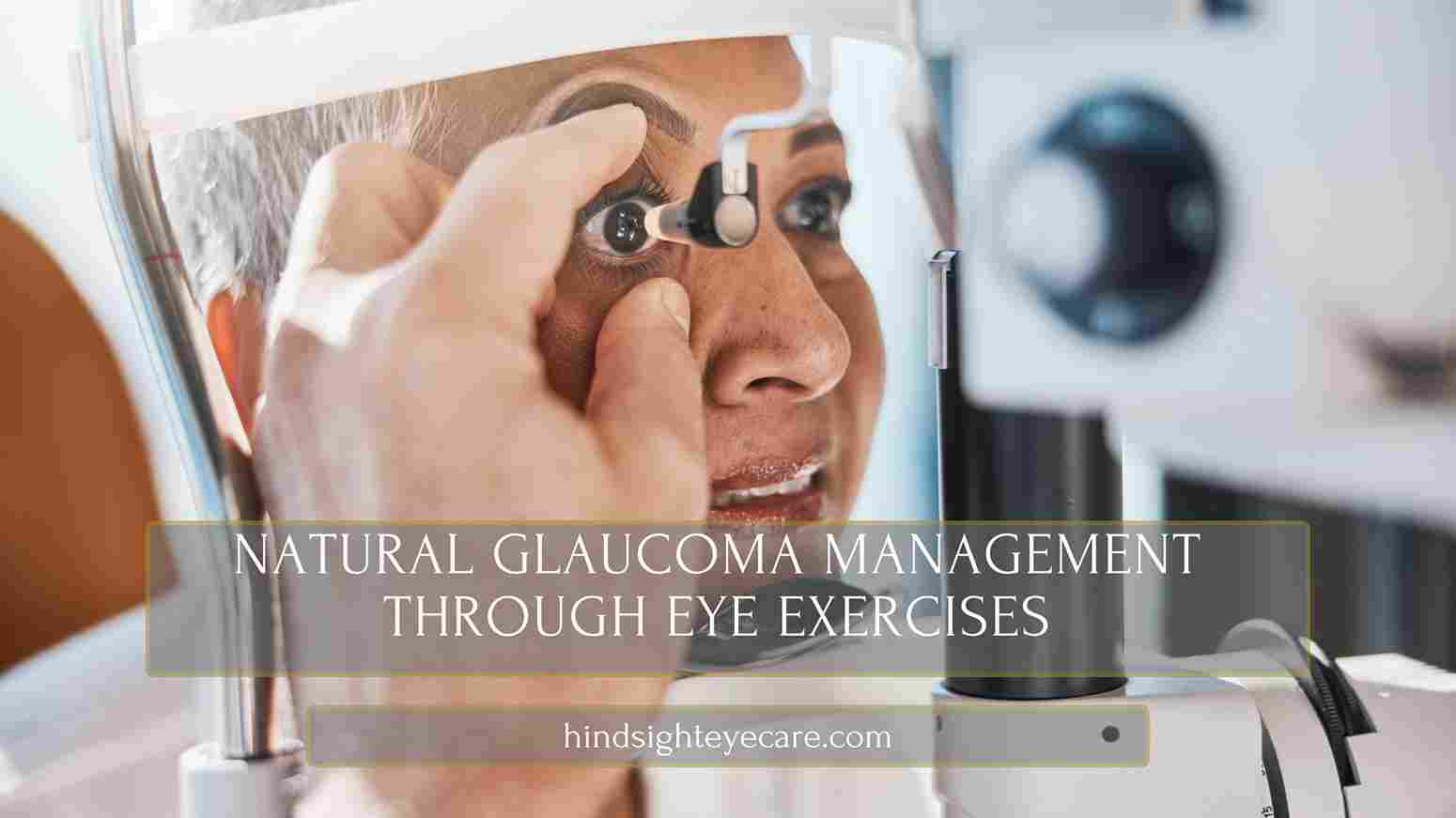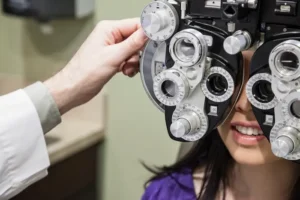Glaucoma is a group of eye diseases that cause damage to the optic nerve, the essential link between your eyes and brain. This damage, often due to high intraocular pressure (IOP), can gradually lead to irreversible vision loss if untreated. Glaucoma is known as the “silent thief of sight” because it progresses slowly, often without noticeable symptoms until it’s advanced.
There are two main types of glaucoma:
- Open-Angle Glaucoma: The most common form, characterized by a gradual increase in eye pressure due to fluid buildup.
- Angle-Closure Glaucoma: A less common but more acute form where the drainage angle is blocked, causing sudden pressure increases.
Traditional treatment approaches for glaucoma typically involve medications, laser treatments, or surgical interventions to reduce eye pressure. However, these methods can be supplemented by lifestyle changes, including natural approaches like eye exercises aimed at improving circulation and reducing tension around the eyes.
Why Consider Natural Glaucoma Management Through Eye Exercises
Natural Glaucoma Management Through Eye Exercises has gained attention as an adjunct therapy for those seeking non-invasive methods to support their eye health. While these exercises are not a cure, they may help relieve eye strain, improve flexibility in the eye muscles, and stimulate blood flow to the optic nerve. Here are some reasons why integrating eye exercises into your daily routine can be beneficial:
- Holistic Support for Eye Health: Eye exercises can work alongside medical treatments, helping to maintain flexibility in the muscles surrounding the eyes.
- Reduction of Eye Strain: Exercises can reduce discomfort and tension, especially for individuals who spend long hours focusing on screens.
- Improvement in Peripheral Awareness: Some exercises target peripheral vision, which is often the first area affected by glaucoma.
It’s important to approach eye exercises as part of a broader strategy to manage glaucoma naturally. These techniques are best used under the guidance of an eye care professional who understands your unique condition and can advise on the best combination of treatments.
Eye Exercises for Glaucoma
Below are a few specific exercises that have shown promise in supporting eye health. Remember, consistency is key, and these exercises should be done regularly but gently.
Palming Exercise
The palming exercise helps relieve stress and encourages relaxation in the muscles around the eyes. This exercise is particularly beneficial after long periods of focused visual activity.
- How to Do It:
- Rub your palms together to generate warmth.
- Close your eyes and place your warm palms gently over them, without applying pressure.
- Breathe deeply and relax, holding this position for a minute.
- Repeat 3–5 times, focusing on the warmth and darkness to help soothe your eyes.
Eye Focusing
Improving focus flexibility is essential for maintaining healthy vision, especially in managing tension around the optic nerve.
- How to Do It:
- Hold a small object (like a pencil) at arm’s length and focus on it.
- Slowly bring it closer to your nose, keeping your eyes on the object the entire time.
- Hold for a few seconds and then move it back to arm’s length.
- Repeat 10 times to enhance flexibility in your focus range.
Peripheral Vision Training
Glaucoma often affects peripheral vision first, so exercises to increase awareness of the outer visual field can be helpful.
- How to Do It:
- Sit comfortably and focus on a point directly in front of you.
- Without shifting your focus, try to notice objects on either side of your vision.
- Slowly move your gaze left and right while paying attention to the edges of your vision.
- This practice can help you stay aware of your peripheral surroundings.
Eye Rolling
Eye rolling is a gentle exercise to strengthen and relax the eye muscles, providing improved flexibility and circulation.
- How to Do It:
- Sit comfortably and look straight ahead.
- Slowly roll your eyes clockwise in a full circle, then counterclockwise.
- Perform each direction 5 times, resting briefly in between.
Blinking Practice
Blinking helps refresh the eyes and maintain moisture, which is essential for good eye health and relieving strain.
- How to Do It:
- Set a timer for 2 minutes and focus on blinking gently and frequently.
- Try to blink every 3–4 seconds to keep the eyes from feeling dry.
- This practice is especially beneficial during extended periods of screen time.
Lifestyle Adjustments for Better Eye Health
Alongside eye exercises, lifestyle habits play a critical role in maintaining eye health and potentially reducing the risk factors associated with glaucoma.
Here you like Traditional Taoism Eye Massage Points for Better Vision
Diet Recommendations
A nutrient-rich diet can have a positive impact on eye health. Here are some recommended foods:
- Leafy Greens: Spinach, kale, and other leafy greens are rich in antioxidants, which can help protect against oxidative stress.
- Omega-3 Fatty Acids: Found in fish like salmon and chia seeds, omega-3s support overall eye health.
- Vitamin C-Rich Fruits: Citrus fruits and berries are beneficial for eye health and help combat free radicals.
Managing Stress and Sleep
High-stress levels and insufficient sleep can contribute to increased eye pressure. Meditation, yoga, or breathing exercises are effective ways to relax and manage stress, which indirectly benefits eye health.
Staying Hydrated
Hydration is essential for eye lubrication. Dehydration can lead to dry eyes, which may exacerbate discomfort and strain.
Precautions and Limitations of Eye Exercises for Glaucoma
While Natural Glaucoma Management Through Eye Exercises can be beneficial, certain precautions are necessary:
- Consultation with Eye Care Providers: Not all exercises are suitable for everyone with glaucoma. Consulting an eye care specialist can help tailor the exercises to your needs.
- Recognizing Overexertion: If you experience discomfort or dizziness, stop the exercises and consult a professional.
How Often to Do Eye Exercises for Best Results
To maximize the benefits of eye exercises, aim to incorporate them consistently:
- Frequency: Perform these exercises at least 3–4 times per week.
- Duration: Spend 5–10 minutes on each session.
- Long-Term Practice: Consistency is key. Integrate these exercises into your routine, especially if you experience eye strain.
Combining Eye Exercises with Medical Treatments
An integrated approach can enhance the overall management of glaucoma. Eye exercises are best used as complementary practices:
- Working with Your Doctor: Inform your eye care provider about your interest in natural methods. They can offer guidance on exercises suitable for your condition.
- Medication and Exercise Balance: Continue with any prescribed medications while incorporating exercises, as these practices are meant to work alongside, not replace, medical treatments.
Conclusion
Natural Glaucoma Management Exercises provides a holistic way to support eye health, especially when combined with traditional treatments. By engaging in regular, gentle exercises, making dietary adjustments, and practicing a healthy lifestyle, individuals can proactively manage glaucoma. Remember, it’s essential to consult with a healthcare provider to tailor an approach that’s safe and effective for you.
Frequently Asked Questions (FAQs)
- What are the best natural methods for managing glaucoma?
- Natural methods include eye exercises, a nutrient-rich diet, stress management, and staying hydrated. These approaches complement medical treatments but should not replace them.
- Can eye exercises alone treat glaucoma?
- No, eye exercises cannot cure glaucoma. They can support eye health but should be used alongside prescribed treatments to effectively manage the condition.
- How long does it take to see results from eye exercises?
- Results vary, but consistency over several weeks is key. Many find that regular practice helps reduce eye strain and may contribute to overall eye wellness.
- Are eye exercises safe for everyone with glaucoma?
- Generally, yes, but it’s important to consult a healthcare provider to ensure the exercises are appropriate for your condition.
- How can I make eye exercises a part of my daily routine?
- Set a specific time each day for exercises, and consider combining them with relaxation practices. Start with 5–10 minutes a day and gradually build a habit.




